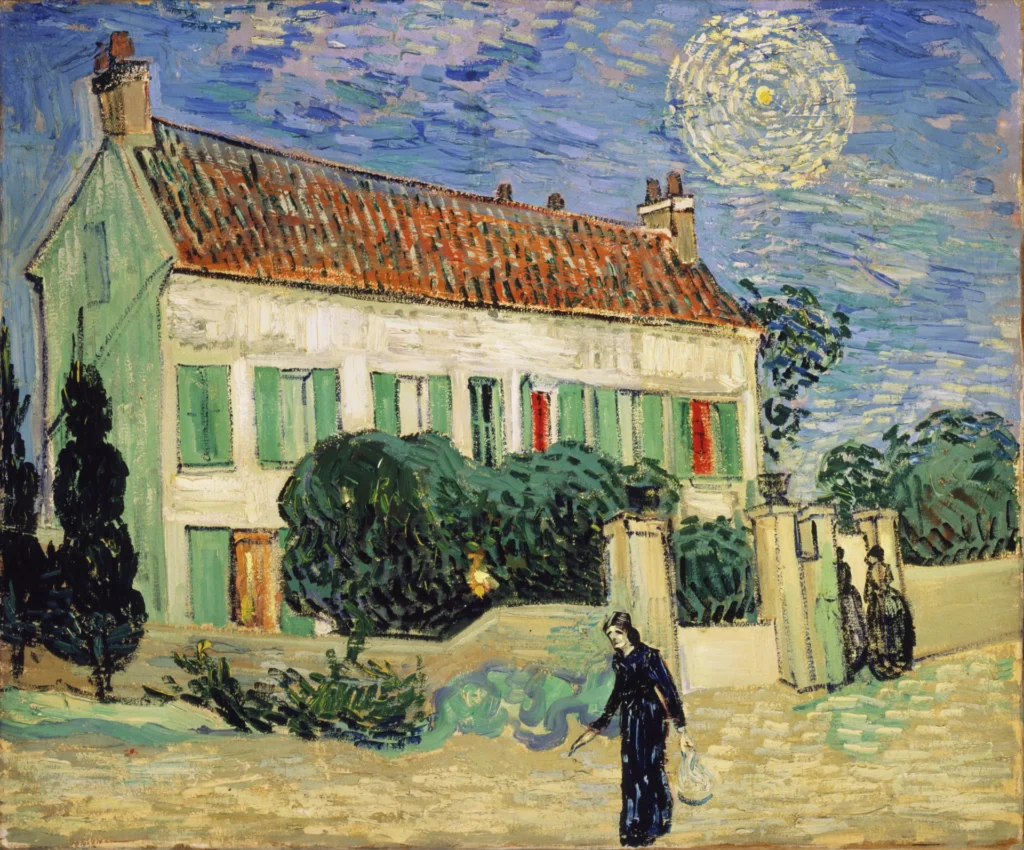White House At Night
'White House at Night' is an evocative painting by Vincent van Gogh, created in June 1890 during his stay in Auvers-sur-Oise. The artwork showcases a solitary white house under a starlit sky, notably featuring the planet Venus. This painting not only reflects Van Gogh's artistic genius but also serves as a poignant representation of his psychological struggle, with vivid red accents in the windows symbolizing his inner anguish.
June 16, 1890
About the Artwork
Created in the final weeks of Vincent van Gogh's life, 'White House at Night' carries the weight of the artist's psychological experiences during this tumultuous period. Van Gogh's use of color and form in the painting communicates a deep sense of anxiety masked beneath the serene setting of a quiet provincial town at night. The red splashes, often interpreted as the house's 'eyes,' effectively reflect the torment he faced. The painting was initially part of Otto Krebs's collection and exhibited in Switzerland in the 1920s. After being thought lost post-World War II, it resurfaced in a noteworthy exhibition in 1995, revealing its tumultuous provenance and importance within art history.
Did You Know
Liked what you see? Add it to your collection.
Enjoyed reading? Share it.
... continued
White House at Night
is an oil-on-canvas painting created by Vincent van Gogh on June 16, 1890, in the small town of Auvers-sur-Oise, just six weeks before his death.
Key Details
The painting measures 59 cm × 72.5 cm (23.2 in × 28.5 in) and is currently displayed at the Hermitage Museum in St. Petersburg. The work is notable for its depiction of a white house at night, with a star in the sky identified as Venus by astronomers Donald Olson and Russell Doescher. This identification was made based on the star's position in the evening sky in June 1890.Symbolism and Style
The painting reflects Van Gogh's psychological tension during his final weeks. The red splashes in the windows, often seen as the 'eyes' of the house, are particularly striking and symbolic of his anguish. The overall atmosphere conveys a sense of anxiety and restlessness despite the tranquil setting of a provincial town at night.Provenance
The painting has a turbulent history. It was part of the private collection of German industrialist Otto Krebs and was exhibited in Switzerland during the 1920s. After World War II, it was thought to be lost but resurfaced in 1995 as part of an exhibition of artworks looted by the Soviets.Authenticity Concerns
There have been concerns raised about the authenticity of the version currently held at the Hermitage Museum. Some experts have suggested that the painting might be a replica, given the fresh appearance of the paint and the mechanical brushwork, which is atypical for a Van Gogh painting from that period. However, these claims have not been definitively proven.Overall, 'White House at Night' is a significant work that reflects Van Gogh's emotional state and artistic style during his final days, and its history highlights the complexities and challenges in preserving and verifying the authenticity of valuable artworks.










